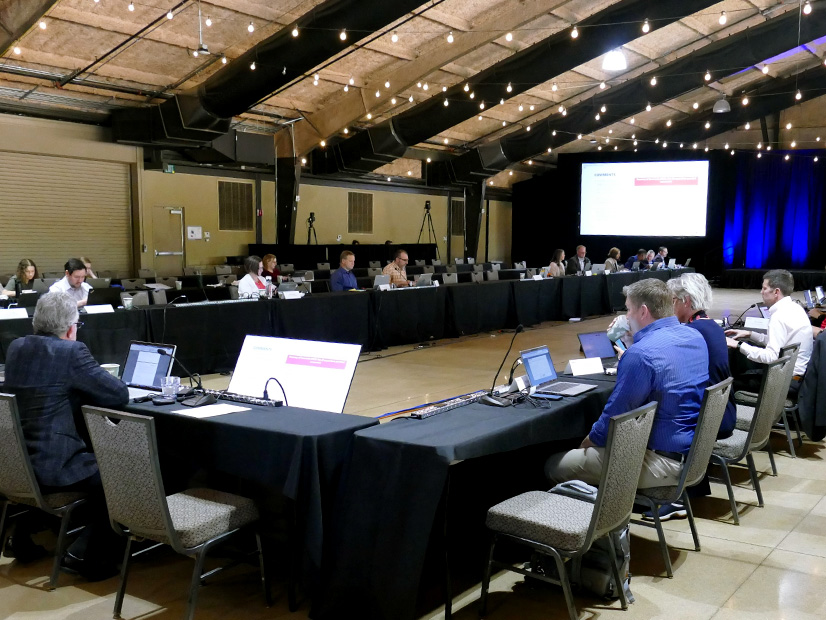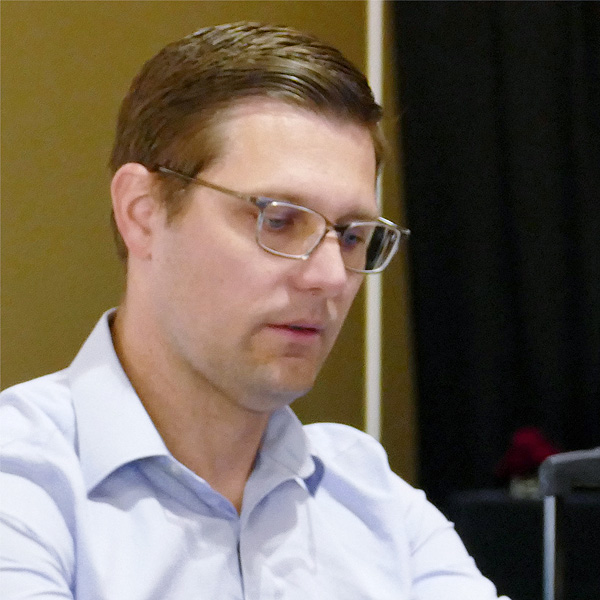
TEMPE, Ariz. — While other Western Interconnection entities have spent their time recently filing comments on the SPP Markets+ tariff or committing to CAISO’s competing Extended Day-Ahead Market (EDAM), participants in SPP’s day-ahead proposal gathered in the Desert Southwest on April 30 for a healthy dose of the RTO’s stakeholder process.
SPP has long prided itself on that process, which seeks membership’s consensus before any consideration for approval. Staff will tell you stakeholder-driven is not just a slogan, but reality.
“Our specialty has always been in the stakeholder process. By bringing a lot of those best practices from our experiences and expertise in the East to the West, we’ve shaped it to help facilitate progress with the stakeholders here,” said Carrie Simpson, SPP’s Denver-based director of seams and western services.
Shielded from Tempe’s bright sun and springtime heat by Salt River Project’s cavernous PERA Training & Conference Center, attendees dug into how they can submit tariff and governing revision modifications and interact with SPP staff.
Senior market analyst Kristen Darden detailed the background, forms, structure and steps within the Markets+ revision request (MRR) process. Modeled after SPP’s RTO process, it facilitates stakeholder input and discussion by providing a transparent method for stakeholders and staff to recommend additions, deletions or changes to Markets+’ governing language.
MRRs will be submitted through SPP’s Request Management System, an online platform that hosts the revision request process and responds to general questions, inquiries and requests. It also contains a knowledge base that can be used for FAQs.
Once MRRs are posted to SPP’s website, they are open to comments.
“I get really excited about our program,” Darden said. “I think it’s a great feature that we have. It shows we are stakeholder driven, we are considered public or transparent with everything that we do.”
“I think they have embraced it, and it wouldn’t be successful without them embracing it and digging into it and participating,” Simpson said. “We’ve got diverse parties, different sectors, different regions of the West, and I absolutely think that’s been a part of the success of Markets+.”
As if to drive the point home, SPP staff agreed with the Markets+ Participants Executive Committee (MPEC) that more education and input is needed on managing transactions across the market’s seams with EDAM and other balancing authority areas. Of course, SPP has deep experience in this area, given its seams with MISO.
“It’s not a secret to anyone that the biggest scenario around objection to Markets+ is the seam,” said MPEC Chair Laura Trolese, with The Energy Authority. “I think starting to work through where the tension points are and what we can do to reduce transactional friction, I think would behoove us to be doing that work earlier rather than waiting till the end of the year.”
“As staff, we hear loud and clear that we want to figure this out,” Simpson said. “I think there’s still just confusion on how it works if we do nothing, and so I think starting there can help people identify what friction exists and what friction does not exist. It’s a very important issue to address, and so I think we let that [stakeholder] process play out.”
For the time being, “transactional friction” will go into the parking lot of items to be addressed further, but with a high priority.
MSC Concerns on Tariff
Arizona Corporation Commissioner Nick Myers, incoming chair of the Markets+ State Committee (MSC), said that while the “industry” has said the tariff is good to file at FERC, some state regulators are concerned about market participants opting-out transmission capability from the market.
“Some states have said they see that as a dealbreaker,” he said. “We’re still trying to strive for some consensus on that.”
In comments filed at FERC, the MSC said some members have “strong concerns about the lack of guardrails around the monthly opt-out provision.” The tariff allows market participants to opt out with only 15 days’ notice. (ER24-1658).
“It is critical to specify these reasons to safeguard against potential market manipulation,” the committee wrote. “It is unclear to the MSC how this option will operate in the context of reliance on the [Western Resource Adequacy Program]’s transmission requirements to ensure resource sufficiency in the day-ahead and real-time markets.”
The Markets+ tariff requires its participants to also take part in the WRAP. That integration was cited by Bonneville Power Administration staff in their recommendation that the federal power marketing administration choose the SPP-run market over CAISO’s. (See BPA Staff Recommends Markets+ over EDAM.)
“[It’s] about what constitutes the reasoning behind opting out,” Myers said. “There could be situations where that transmission is needed for other parties, and now there could be market advantages to an entity pulling out some transmission for no other reason than their own market advantage. There needs to be bounds around when that’s allowed to happen.”
SPP said it “fully expects” the tariffs of participating Markets+ transmission providers and balancing authorities to have more details on opt-outs and promised to provide further details on the provision.
“More transmission is better than less,” SPP attorney Chris Nolen said. “The opt-out gives us the ability to have transmission participate in the market. [Some entities] may have seasonal limitations or other things that absent some ability to opt out and we might not have access to that transmission at all.”
Alluding to temperatures that would hit 96 degrees Fahrenheit during the meeting, Myers told MPEC attendees to count their blessings. “You guys are lucky it still hasn’t hit 100 degrees yet here in Arizona,” he said.
Myers and Vice Chair John Hammond, with the Idaho Public Utilities Commission, are replacing Colorado’s Eric Blank and Oregon’s Letha Tawney, respectively.
The MSC comprises regulators from Arizona, California, Colorado, Idaho, Montana, Nebraska, Nevada, New Mexico, Oregon, South Dakota, Utah, Washington and Wyoming.
APS’ Walter Joins MPEC Leadership
The MPEC approved Arizona Public Service’s Kent Walter’s nomination as committee vice chair, replacing co-worker Brian Cole. Trolese remains as MPEC chair.
The committee endorsed an interim governance task force that will initially have to solicit leadership nominations. It either will report back to MPEC during its August meeting in Colorado or seek approval of its chair with email votes. The task force then will draft language setting requirements on stakeholder group attendance, proxies and absences.
MPEC also approved Chelan County (Wash.) Public Utility District’s Steven Wickel to a public power seat on the Markets+ Transmission Working Group. Seven other vacancies remain on various stakeholder groups.



